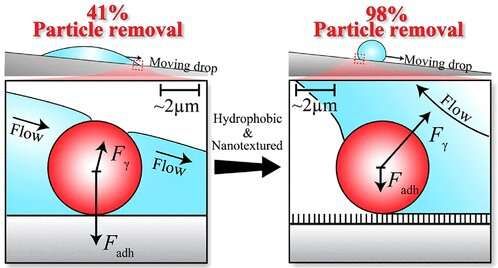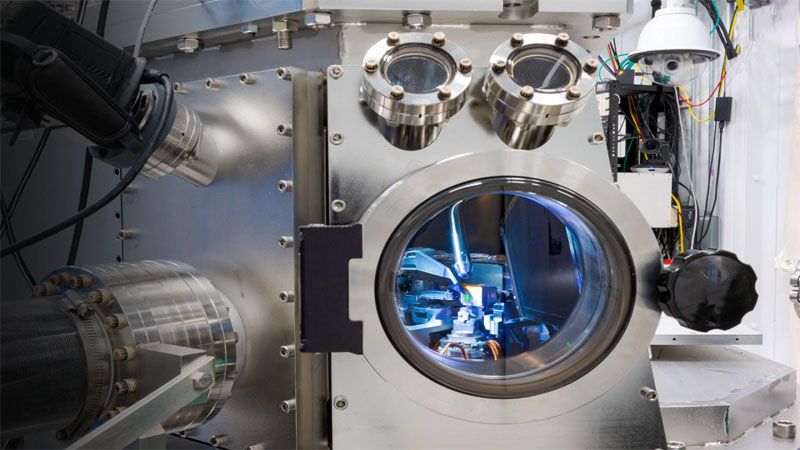Decision-making algorithms transform how automated systems evaluate and synthesize novel compounds.
Category: sustainability – Page 561


Researchers develop new method to remove dust on solar panels
Taking a cue from the self-cleaning properties of the lotus leaf, researchers at Ben-Gurion University of the Negev have shed new light on microscopic forces and mechanisms that can be optimized to remove dust from solar panels to maintain efficiency and light absorption. The new technique removed 98 percent of dust particles.
In a new study published in Langmuir, the researchers confirmed that modifying the surface properties of solar panels may greatly reduce the amount of dust remaining on the surface, and significantly increase the potential of solar energy harvesting applications in the desert.
Dust adhesion on solar panels is a major challenge to energy harvesting through photovoltaic cells and solar thermal collectors. New solutions are necessary to maintain maximum collection efficiency in high dust density areas such as the Negev desert in Israel.

The US just promised to adopt universal health care
Every single member of the UN doubled-down today on a commitment to provide universal health coverage to their citizens. The fact that the US will be among them is perhaps evidence of how disconnected these declarations can be from actual domestic political agendas.
Yet the issue is important, and it shows just how out of line the US approach to health care coverage is compared to the rest of the world. Only about half the world’s population has access to the kind of affordable health care services that don’t require crippling out-of-pocket costs. Most of those people are in mid- and low-income countries. Or they are in the wealthiest country on Earth: the US.
Bringing universal health care to everyone is one of the “sustainable development goals,” the ambitious to-do list for UN member countries to complete by 2030. For the UN, universal health care means, “financial risk protection, access to quality essential health-care services and access to safe, effective, quality and affordable essential medicines and vaccines for all.”



Scientists Are Contemplating a 1,000-Year Space Mission to Save Humanity
VR and Interstellar Travel
Crew members in route to a distant planet may best be accommodated by full immersion VR. The actual spaceship could be reduced to a relatively simple, small, well-shielded vehicle. Inside the crew’s biological material could be supported by a simplified nutrition, waste and maintenance system. Their minds could inhabit a fully immersive VR environment that would provide them with all the luxuries of vast, diverse spaces and experiences — complete with simulated gravity, simulated pleasant nature-like and artificial environments, and simulated meals.
They could also engage in simulating the type of society they intend to build once they arrive in their new physical environment, using similar constraints to the ones they will encounter. This could allow many years for actual human experiences to test and refine what they will build and how they will interact in their new home.
Advances in maintaining biological material may even allow a single generation to survive the entire journey. They may adopt their own conventions for simulating death and birth for reasons related to simulating their new home or for maintaining psychological well-being over many centuries. Simulated death and reincarnation may allow a single crew to experience many childhoods and parenting situations without the need for actual procreation.
Another concern that this addresses is the need for massive funding for research and development as well as resource provisioning when building conventional spacecraft intended to deliver things like artificial gravity, agriculture and pleasant living spaces for large multigenerational populations — all while shielding them from radiation. Funding the development of fully immersive VR seems like a relatively easier to fund activity that has immediate uses here on earth and elsewhere. The types of ships that would be sufficient for sustaining and shielding humans living mostly in immersive VR would be so simplified that most of the fundamental research that would be specific to designing such crafts may have already occurred.
After 200,000 years or so of human existence, climate change threatens to make swathes of our planet unlivable by the end of the century. If we do manage to adapt, on a long enough timeline the Earth will become uninhabitable for other reasons: chance events like a comet strike or supervolcano eruption, or ultimately — if we make it that long — the expansion of the sun into a red giant in around five billion years, engulfing the planet completely or at a minimum scorching away all forms of life. Planning for potential escape routes from Earth is, if not exactly pressing, then at least a necessary response to a plausible threat.
Tesla CEO Elon Musk: Cybertruck could hit Cd of .30 “with extreme effort”
Last week we covered how the Tesla Cybertruck’s aerodynamics might be better than its boxy shape suggests, and today Tesla CEO Elon Musk responded to the numbers and suggested that the Cybertruck could get a Cd (drag coefficient) as low as .3 – quite impressive for a pickup truck.
